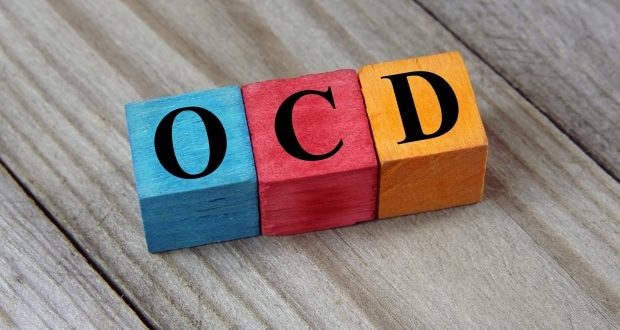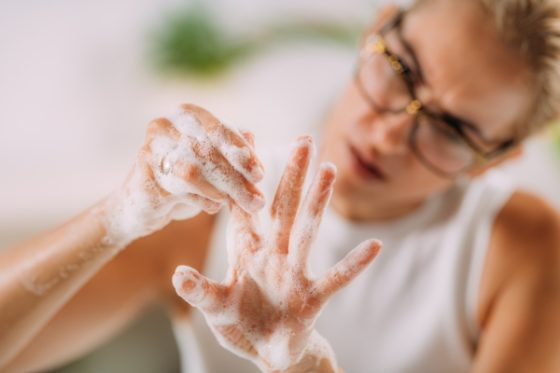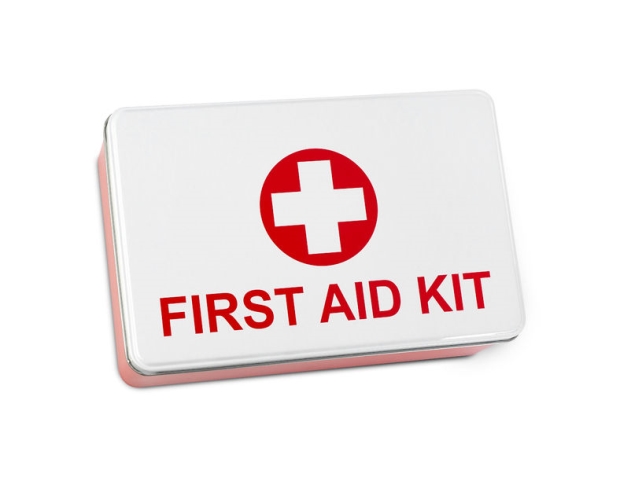Obsessive Compulsive Disorder – A Tragic Death
On September 21, 2021, the FBI confirmed the remains of Gabby Petito. Petito was a young woman who had gone missing while on a road trip with her fiance, Brian Laundrie. Upon arriving in Utah, police intercepted a fight between the couple.
In a video by officers at the scene, Petito attempts to dismiss her fiance’s potentially abusive actions. She mentions that she struggles with OCD, and the couple was experiencing a disagreement as a result.
When people think of Obsessive-Compulsive Disorder, many picture stereotypical ideas of the illness. Many think of a person organizing their belongings by color, size, and shape. Some people may even describe themselves as “OCD.” Yet, if someone feels that way, they are least likely to have the disorder.
Even so, some people only experience obsessions. On the contrary, some people with OCD don’t experience these symptoms at all. Some people with the disease do wrestle with the need to interact with particular objects- compulsions. Unwanted or intrusive thoughts characterize these. Some have to live with both.
Everyone is capable of experiencing obsessive thoughts or actions. The trait that sets OCD apart from average obsessions is its effect on daily life. People with Obsessive-Compulsive Disorder have a challenging time ignoring thoughts or compulsions.
This can affect the person’s quality of life and make it very hard to complete daily tasks, work, or self-care. Here is everything you need to know about Obsessive-Compulsive Disorder.
Obsessive-Compulsive Disorder
OCD is a chronic mental illness characterized by unwanted, uncontrollable thoughts and actions. Unlike average obsessions, these symptoms interfere with the person’s quality of life. OCD is also categorized by obsessive thoughts that invoke anxiety.
These are obsessive and compulsive thoughts, unsettling for the person with OCD. Compulsions happen when the person tries to ward off intrusive thoughts or images.
These are not ordinary fidgets like picking at fingernails or organization by color. These can be very specific and time-consuming.
For example, a person with Obsessive-Compulsive DisorderCD may have an obsession with health and cleanliness. It’s normal to be hygienic, but a person with OCD may experience anxiety if they don’t react to intrusive thoughts. This will turn into a compulsion of washing their hands 10 times before leaving for work.
Symptoms
A person with OCD is characterized by symptoms of obsessions and compulsions. Some people with OCD may only experience one part of the disorder. Some experience both symptoms. OCD diagnosis also falls into sub-categories depending on the person and situation:
Checking
A compulsive need to check certain things or perform certain activities. This usually comes from an invasive fear. Examples of this include locking/unlocking doors, reassurance, and obsessively checking the stove.
Contamination / Mental Contamination
The intense fear of being unclean to the point of unhealthy behaviors. Examples of this include extreme handwashing, avoiding public restrooms, or fear of shaking hands.
Mental contamination is a newer symptom. This refers to the person feeling dirty after being harmed.
Ruminations / Intrusive Thoughts
Unwanted thoughts make the person feel very anxious or fearful. Ruminations can be a subcategory of intrusive thoughts.
A neurotypical person will usually ignore an everyday topic like religion. A person with OCD will go through a constant conversation about it in their head.
Hoarding
The inability to remove unnecessary items in one’s living space. Although hoarding is a different mental illness, people with OCD can hoard because of intrusive thoughts.
Symmetry and Ordering
The compulsive need to have everything organized perfectly. This is the symptom most stereotyped by the media and neurotypical people.
But, unlike what we see in TV shows and movies, it’s not all about color coordination. This is done to the point that the person with OCD won’t go out until they feel that everything is in “order.”
Obsessions
Images, thoughts, or impulses constantly happen for the person with OCD. These are often very disturbing and make the person feel anxious.
People with OCD know that these thoughts are unwarranted and don’t want them to happen. Healthy obsessions are naturally occurring for a neurotypical person (i.e., an obsession with a favorite TV show).
Obsessions are taken to an extreme with OCD. Instead of healthy obsessions associated with pleasure, people with OCD experience intrusive thoughts.
Some people may not have obsessions paired with compulsions. Thus, they may not actually act upon the fear. Even so, the thoughts are uncomfortable, anxiety-inducing, and uncontrollable.
Common Obsessions
-
- Fear of contamination
- Unwanted sexual thoughts
- Religious obsessions (Scrupulosity)
- Fear of losing control
- Fear of harming oneself or others
- Perfectionism
Compulsions
Repetitive thoughts or behaviors that the person uses to evade their obsessions. People with OCD know it is only a temporary escape.
Even so, they will rely on their compulsion without finding a better coping mechanism. Compulsions are inconvenient, taking up lots of time needed for work, school, or daily activities.
Like obsessions, everyone experiences healthy compulsions. For example, you have to repetitively practice music to get better at sight-reading.
For people with OCD, compulsions are torturous and never done by choice. They are for escaping anxiety invoked by intrusive thoughts.
Common Compulsions
-
- Excessive washing and cleaning
- Constantly checking if harm, mistakes, or terror has happened
- Unhealthy repetition of daily activities
- Mental compulsions and putting things in order
Potential Causes and Risks
OCD is a common mental health disorder that affects all people. It’s usually diagnosed in young adults, but it can be diagnosed in younger children or adults above 35.
As of now, the actual cause of OCD is unknown. But, psychologists do believe there are potential risk factors.
OCD tends to be more common in women than in men. Psychologists believe that stress can elevate symptoms. It’s common in older adolescents and young adults.
In young children, there are rare cases of temporary OCD symptoms following a strep infection. This is a pediatric autoimmune neuropsychiatric disorder (PANDA), which goes away after antibiotic treatment.
Genetics
Research continues to better treat and diagnose OCD. There has also been some evidence to prove that genetics could be a major factor.
Family and twin studies have shown a correlation between first-degree relatives and people diagnosed with OCD. The risk increases if the first-degree relative gets a diagnosis during middle age.
Brain Structure
Although the connection is still unclear, there appears to be a correlation between OCD and specific brain abnormalities. Research is ongoing to further prove this connection.
Imaging studies have shown differences in the frontal and subcortical brain structures of patients with OCD. This can help psychologists understand the direct cause of OCD and how to create personalized treatments for patients.
Environment
Research is being conducted into how trauma may be associated with OCD patients. In some cases, childhood trauma has been reported in patients who developed OCD later on.
This is especially true in cases of childhood physical and sexual abuse. Even so, this is a developing cause. There’s a need for more research before linking OCD with trauma.
Treatment
Obsessive-Compulsive disorderCD is treated with medication, psychotherapy, or both. Many patients with OCD respond to treatment, but some still experience symptoms.
OCD must be diagnosed and treated by medical professionals trained in psychology. There is no cure for OCD, but a combination of treatment methods can reduce symptoms.
People with OCD can experience other mental health disorders along with their previously diagnosed condition. These can include depression, anxiety, body dysmorphic disorder, and more. A psychologist must also consider these other mental health conditions before making a formal diagnosis.
Medication
Serotonin Reuptake Inhibitors (SRIs) and Selective Serotonin Reuptake Inhibitors (SSRIs) are commonly used to treat OCD. They are often taken at higher doses for OCD patients and take some time to start working. Research on the effectiveness of the antipsychotic medication is mixed, but it can be prescribed to patients with OCD.
A person with OCD should always talk to a doctor or pharmacist before taking medications. It’s essential to know the benefits and risks of the drug they’re taking.
A patient should never stop taking their medication unless on a doctor’s instruction. Inform your doctor of dangerous side effects immediately
Some patients experience immediate improvement after taking medications. There are other medications for treating OCD.
Even so, research is ongoing on these medications to know if there are benefits to taking them. SSIs and SSRIs continue to be the leading choice by psychiatrists for patients with OCD.
Psychotherapy
Various types of psychotherapy are effective in treating patients with OCD. Even so, some methods are more effective than others. Cognitive Behavioral Therapy (CBT) and other similar therapies have been researched to prove their particular effectiveness.
Every patient’s treatment plan is different, and some methods will work better than others. Some people with OCD will start with one treatment before moving on to the other.
Some patients find that one doesn’t work before finding another treatment that does. Others will use a combination of both to reduce their symptoms.
Exposure and Response Prevention (EX/RP)
This subcategory of CBT can help patients with OCD. This form of psychotherapy exposes the patient to situations that trigger compulsions (i.e., touching something dirty). The patient will then be refrained from undergoing the compulsion (i.e., washing hands).
Transcranial Magnetic Stimulation (TMS)
TMS is a new treatment method that the FDA recently approved in 2018. It is effective for treating OCD in adults.
It’s a noninvasive procedure that uses magnetic fields to stimulate nerve cells. It has been very effective in patients with depression and, more recently, OCD.
Seek Help
Obsessive-Compulsive Disorder can be a challenging mental illness to live with, especially without treatment. Even so, there are ways to reduce symptoms.
If you or your teen has been struggling with uncontrollable symptoms of OCD, please seek out professional psychiatric care. Help is available, and you’re not alone.










